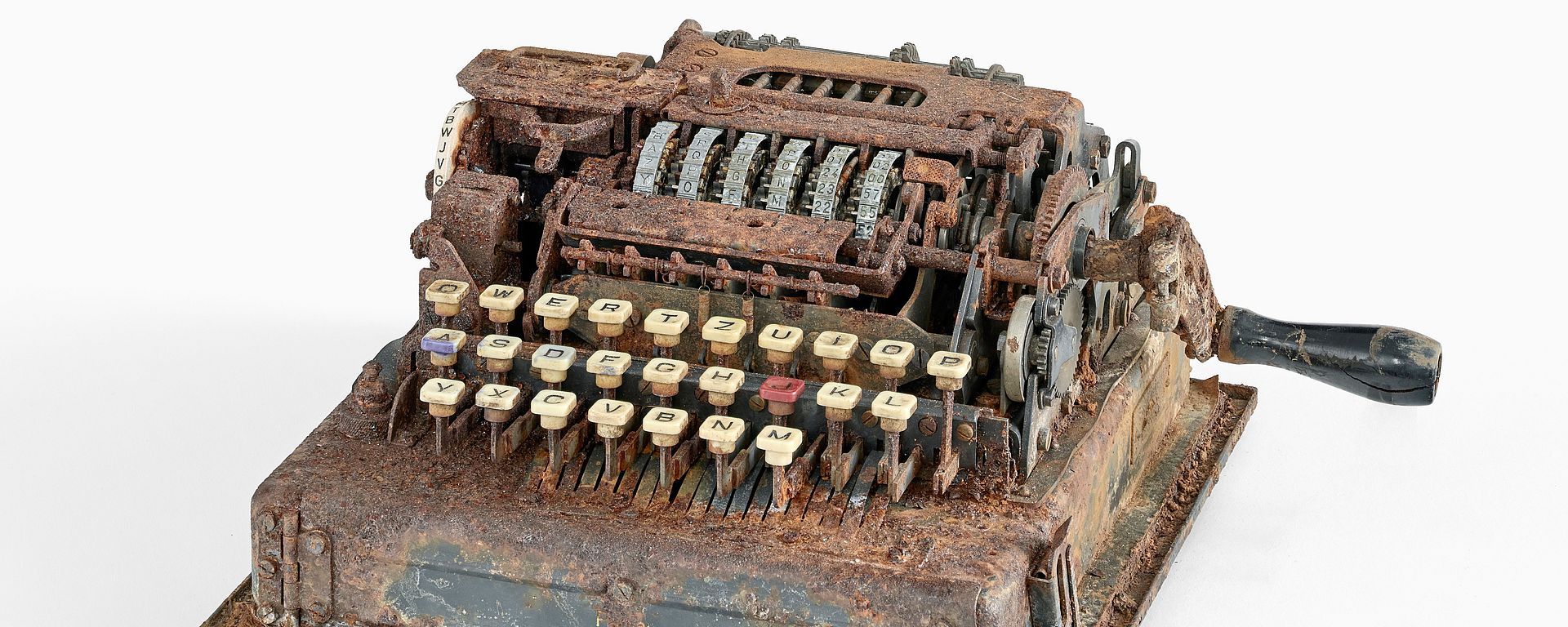
Photo: Deutsches Museum, Konrad Rainer | Konrad Rainer
The secret history of cryptology in World War 2
Cipher device 41
Hardly any other cipher device in the collection of the Deutsches Museum has posed as many riddles as the cipher device 41, which was supposed to replace the now famous Enigma at the end of the Second World War. But things turned out differently.
The cipher device 41 was produced from 1943 onwards by the Wanderer Works in Chemnitz, which, in addition to automobiles and bicycles, also manufactured office machinery. It was intended to replace the now considered insecure Enigma. However, due to a shortage of light metals and labor towards the end of the war, Wanderer could no longer produce it on a large scale. Today, only a few devices remain, as most were destroyed immediately after the war.
“If Menzer's devices had been introduced in a timely manner from 1940 on, they would certainly have complicated the Allied cryptanalytic effort.”
The cipher device 41 (Inventory Number 2017-803) likely spent over 70 years in the soil. Consequently, it appears heavily corroded on the outside. However, CT scans reveal that the machine's interior has remained in excellent condition. Photo: Deutsches Museum | Konrad Rainer
The Deutsches Museum has two models of the cipher device 41 in its collection: one with a keyboard for encrypting messages and another with ten digits for encrypting weather data.
The model with ten digits was discovered in 2006 in a lake in East Germany, along with a group of similar devices. The Deutsches Museum acquired it in 2013 at an auction in London, where it was in a heavily restored condition.
The keyboard model was buried in the forest soil for almost 70 years. In 2017, it was discovered by hobbyist treasure hunters south of Munich. At the German Museum, the machine was initially examined and then preserved by specialists, maintaining the same level of corrosion as when it was found. The museum aims to showcase the traces left by decades in the ground. Accordingly, the device is prominently displayed in a showcase in the exhibition "Image Script Codes".
Image Gallery of Cipher Device
Conservation research of SG-41
“For about six years, we have been researching to learn more about the Cipher Device and its inventor Fritz Menzer. There was virtually no information about him, no photos, nothing. He was like a phantom in German cryptology history. Today, this phantom finally has a face and a story that can be told.”
Who was the inventor of the cipher device?
Fritz Menzer (born on April 6, 1908, in Herrndorf, Saxony, as the youngest of four children; died on October 25, 2005, in Bad Homburg) was a German cryptologist. He initially trained as a toolmaker and later joined the Reichswehr. In 1932, he filed his first patent, and from May 1935, he worked in the cipher department of the Oberkommando der Wehrmacht. He developed the cipher device 41, the successor to the legendary 'Enigma,' based on a cipher machine by Boris Hagelin. After the war, he worked as a teacher in Zschopau and was later detained by the Russians. In 1949, he escaped to the West. His name last appeared in records in 1951, and until the research conducted by the team from the German Museum, little was known about his life thereafter. The film 'Fritz Menzer - ein geheimes Leben' (Fritz Menzer - A secret life) traces his life for the first time, based on recently declassified intelligence files and numerous reports and photos from Menzer's surroundings.


